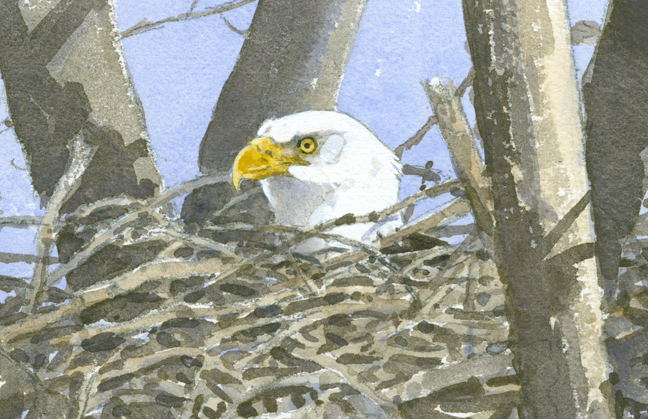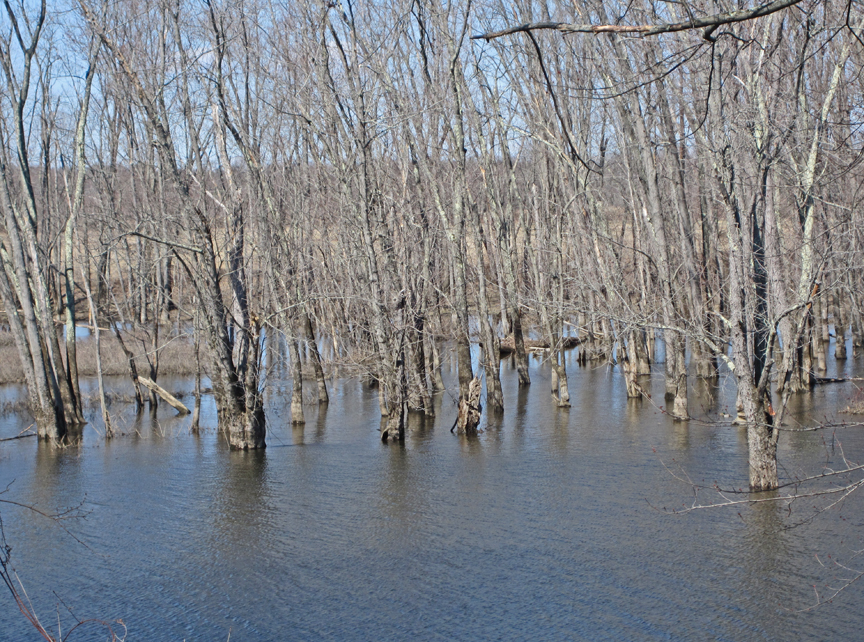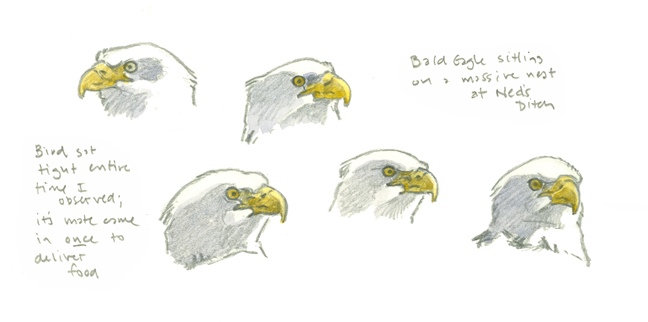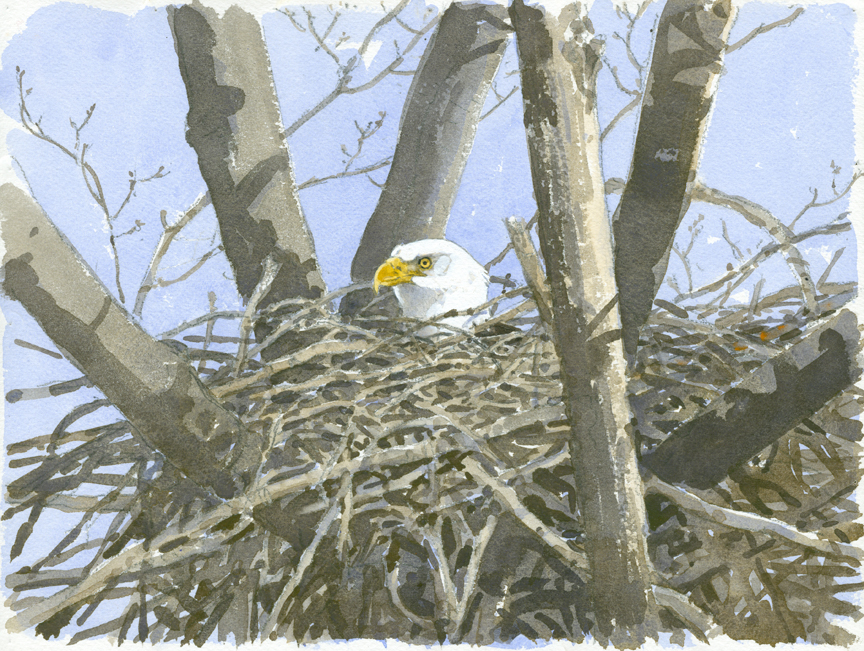This is from a series of posts by MABA resident artist Barry Van Dusen
Arcadia Wildlife Sanctuary, Easthampton March 22, 2016

Kestrel at Arcadia, watercolor on Arches cold-press, 10.25″ x 13.75″
As John and I are walking back to my car by the bridge, a slender graceful bird alights on a telephone pole – a beautiful male Kestrel! I should have anticipated this species here – the habitat is classic Kestrel country. In fact, I learn from the latest issue of Connections Magazine that Arcadia fledged 4 Kestrels in 2015, and is one of only two Mass Audubon properties where the species currently nests. Whether this is one of Arcadia’s breeding birds is hard to say. We’re right at the beginning of the period when Kestrels return to Massachusetts, so this bird may just be passing through…
After lunch at the visitor center, I hike the Horseshoe Trail to the Old Orchard, then follow the Fern Trail up along the Mill River. The topography is a roller-coaster of humps and hollows, ridges and gullies. These may be glacial in origin, or perhaps remnants of ancient streambeds and banks.
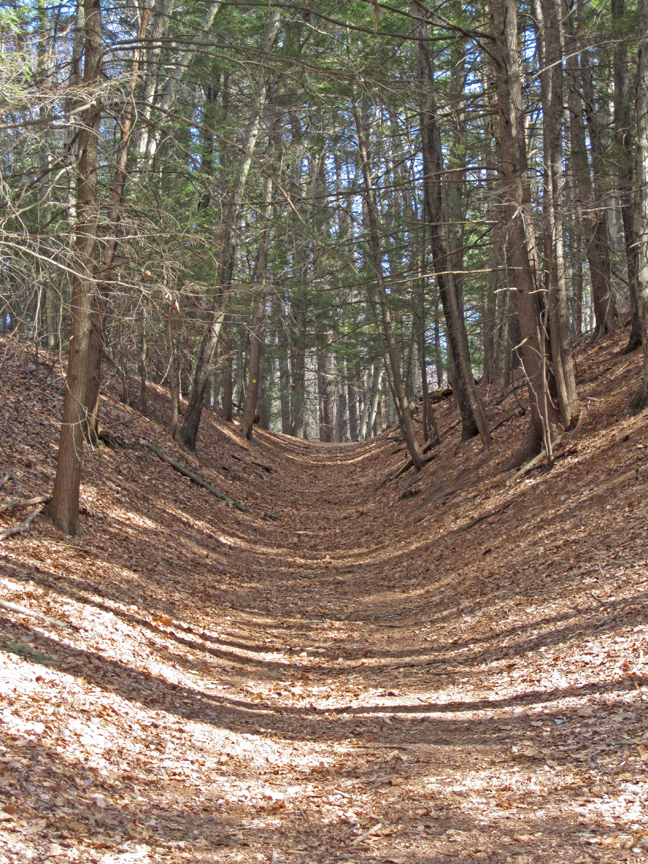
Old Coach Road Trail
Along the River Trail, I play hide and seek with a handsome pair of common mergansers in the Silver Maple Swamp. When I move my scope to get a better view, the birds move too, quickly putting some tree trunks or brush between us.
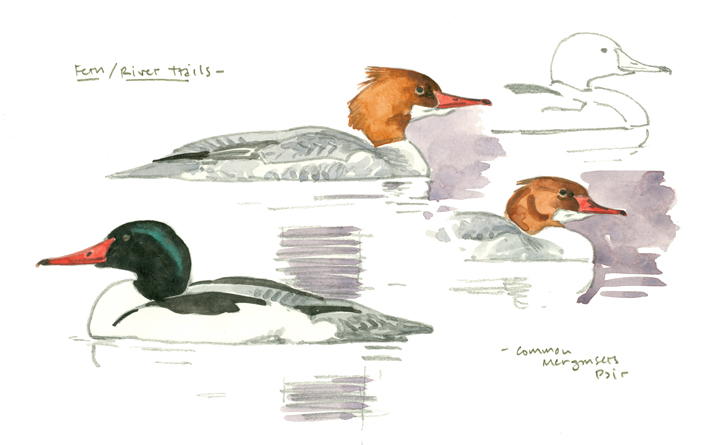
Common Merganser Pair, sketchbook study, 6″ x 10″
In late afternoon, I return to the grasslands by The Oxbow, hoping to see the Kestrel again. No luck this time, but the sun has swung around and the Mt Tom range is now bathed in soft afternoon light. I set up my field kit for some landscape work.

watercolor nearly finished…
My view is the northern end of the Mt Tom range, where it drops down abruptly to the Connecticut River. I’m looking across the field where I saw the Kestrel this morning. Though not visible in my painting, The Oxbow lies just behind the trees at the end of the field, while the main course of the Connecticut River is on the far side of the mountain.
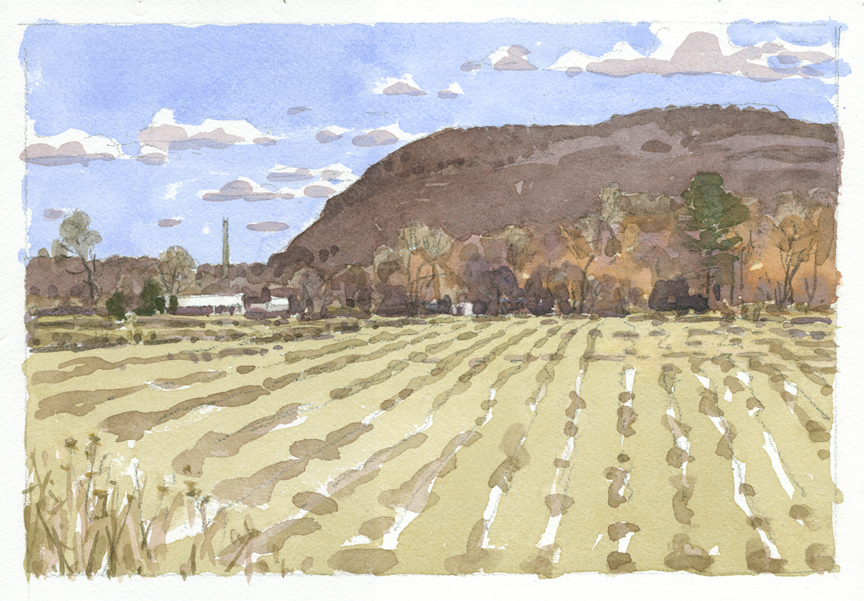
Mt Tom Range from Arcadia, watercolor on Arches cold-press, 8″ x 11.5″
As I’m painting, one of the eagles soars in from the south and circles over Ned’s Ditch, then peels off to the west. A FINE DAY at Arcadia!


